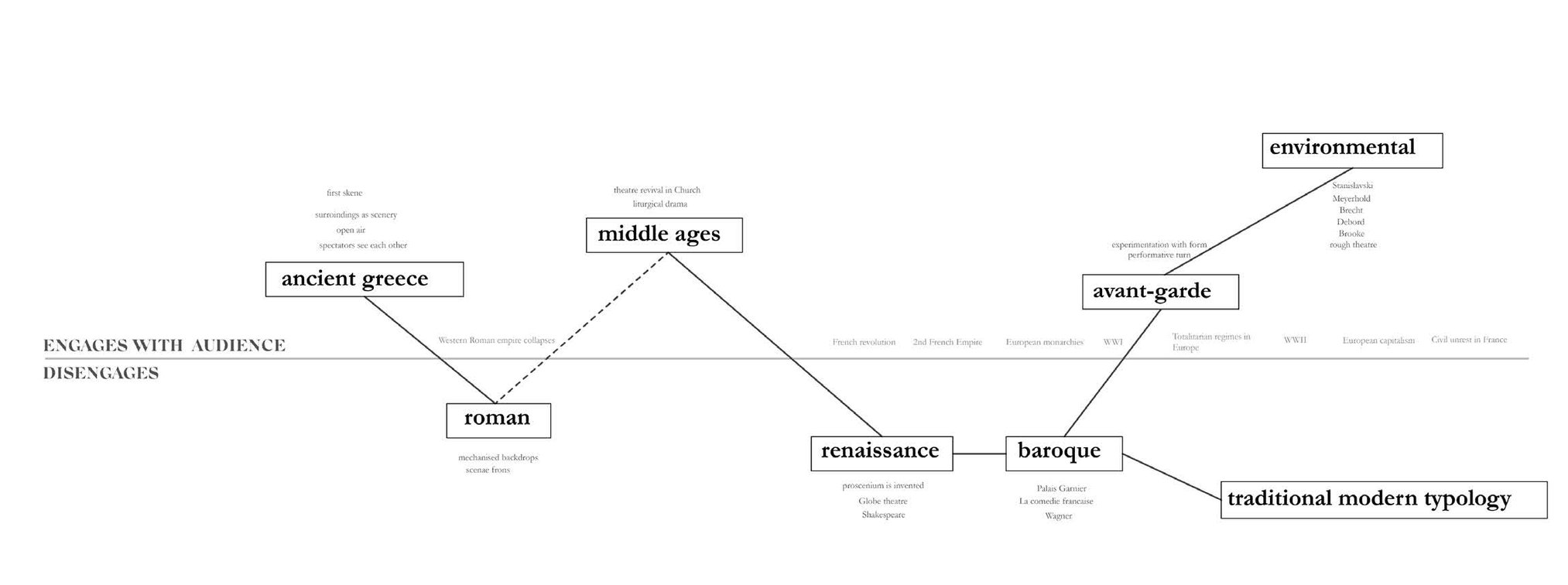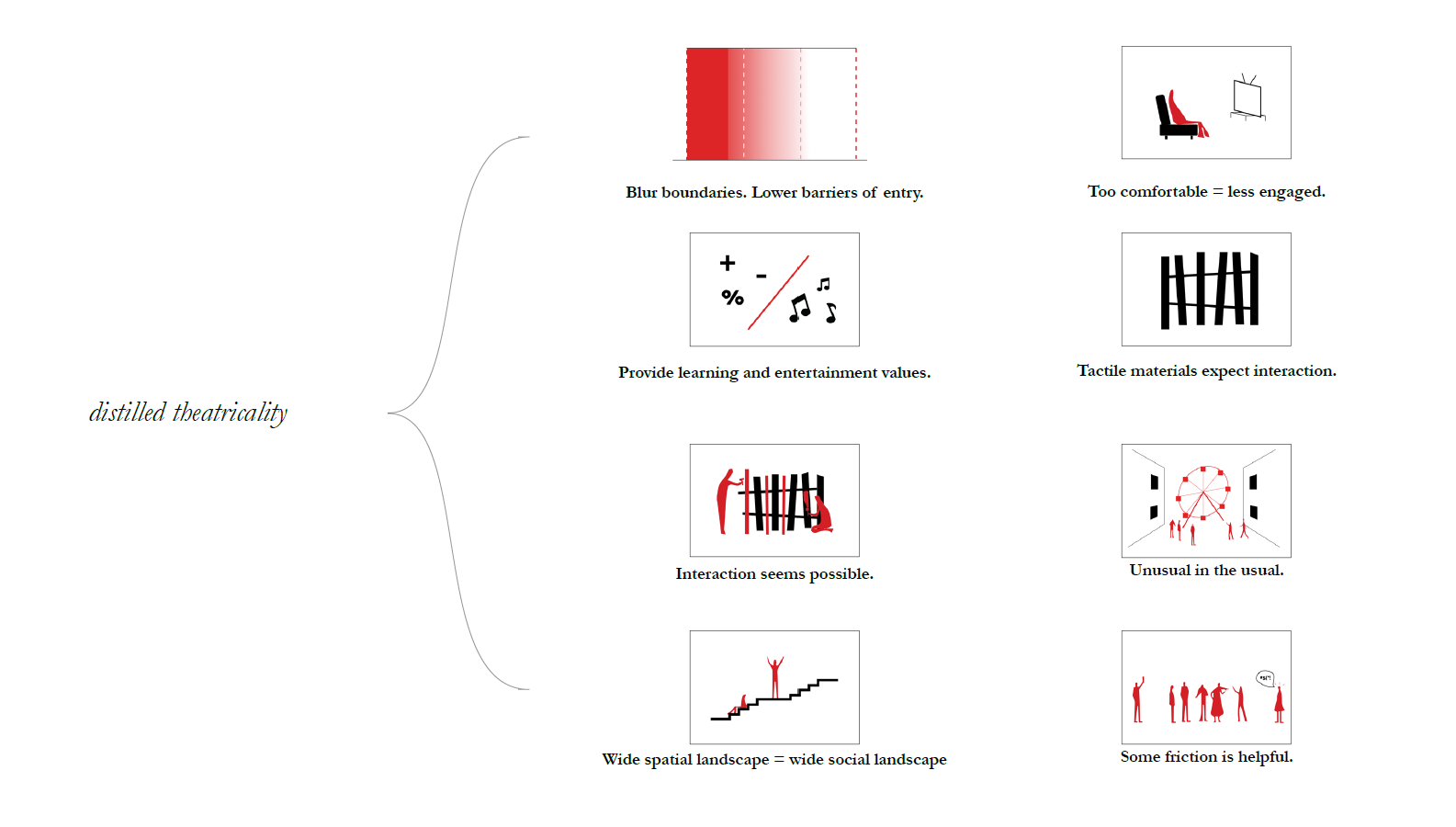




Description
Theatre of the City
This project studied the current lack of urban engagement with the ruinous monument buildings in the regional city of Rostov, Russia, and how to combat it with theatre.
During my research, I found many buildings in Rostov that are listed as monuments also slated for demolition due to their dangerous condition. Such architectures are rendered into a legal limbo, where they slowly dissolve into oblivion. I made a whole other project out of it.
To revitalise an abandoned House of Guderman, I propose a scheme of gradual occupation of the building by a theatre company. First, simple interventions – paint and posters come in handy. As the project ramps up, more citizens get involved in turning a building from a ruin into a cultural hotspot. The user is the agent; the architect must step back.
Specific in its approach, I aimed to make my approach generalisable to other ruined monuments of Rostov, proposing a possible alternative to their assured death, either by natural causes or by destructive restoration.
Type:
Master's Graduation project
Year:
2023-2024
Location:
Rostov-on-Don, Russia
+ the city
City of Rostov expanded Northwards through the 18-20th centuries. The current centre presents a network of historic buildings that range from good to terrible condition.
As I round during the research, many of the buildings with a protected monument status are still slated for demolition due to their dangerous condition.
This is where this project lies - dying heritage.


+ the theatre


+ theatre of the city




There is a great tectonic difference between the old and the new parts.
Original structure - mass brick construction. The new addition - a translation layer of skeletal timber, which turns the ruin into a building again. Lastly, theatrical layer - skeletal structures of standard scaffolding that ensure adaptability of the building to any performance equipment and setup.

Indoors theatre

Indoors theatre - performance

Staircase 'Hinge' - art exposition

Staircase - Cafe on the ground floor

Dance hall

